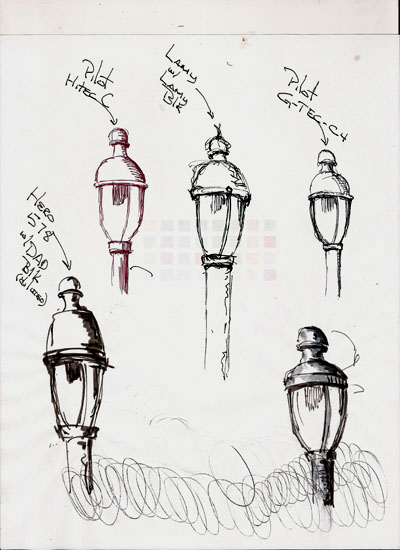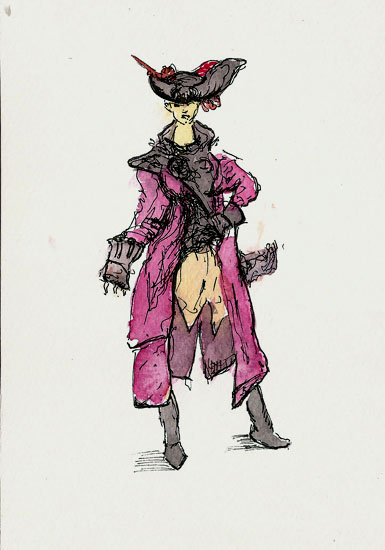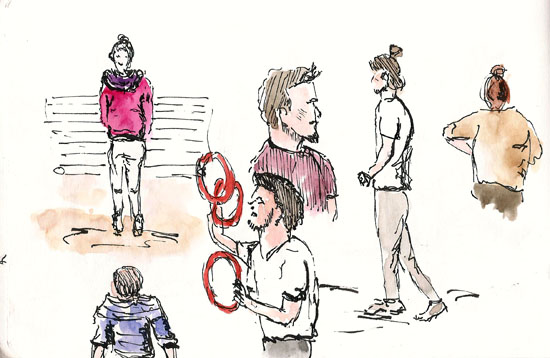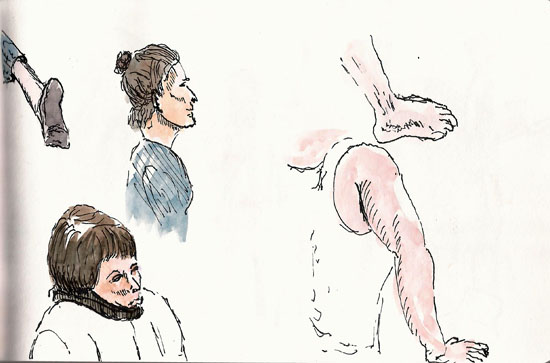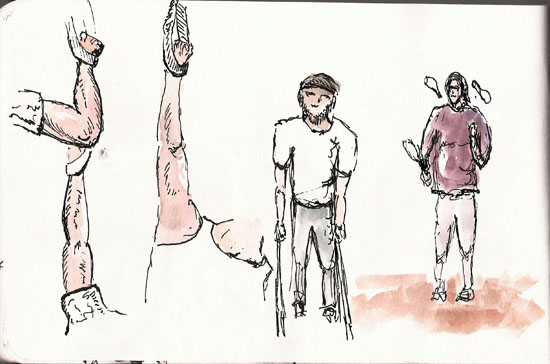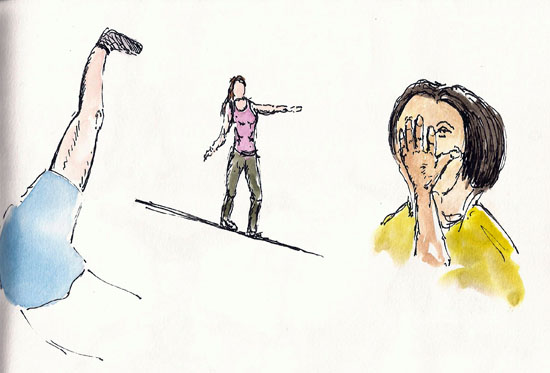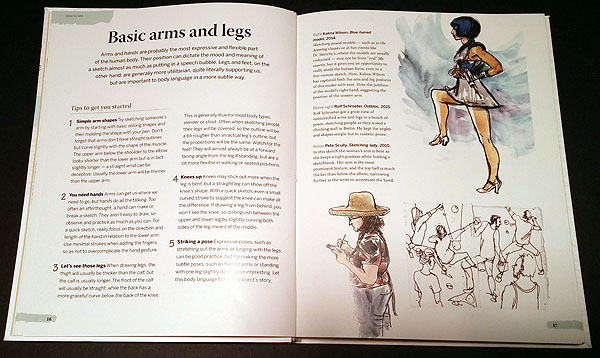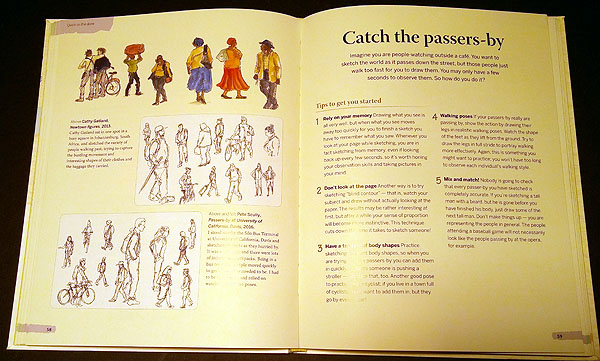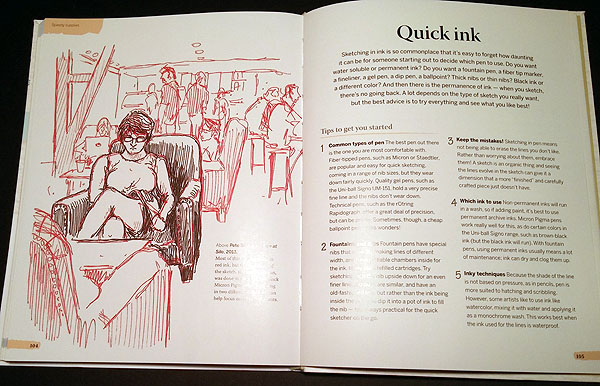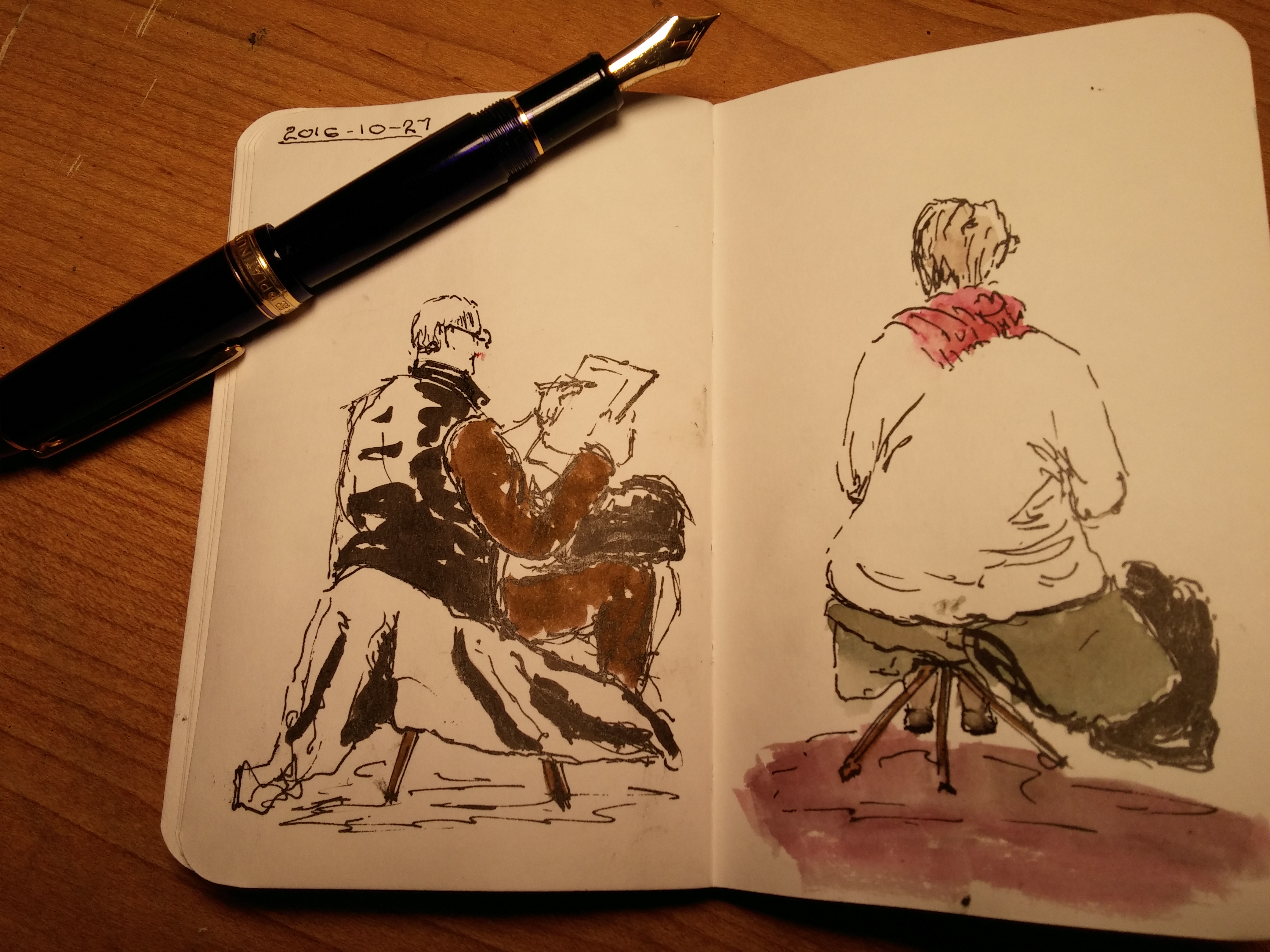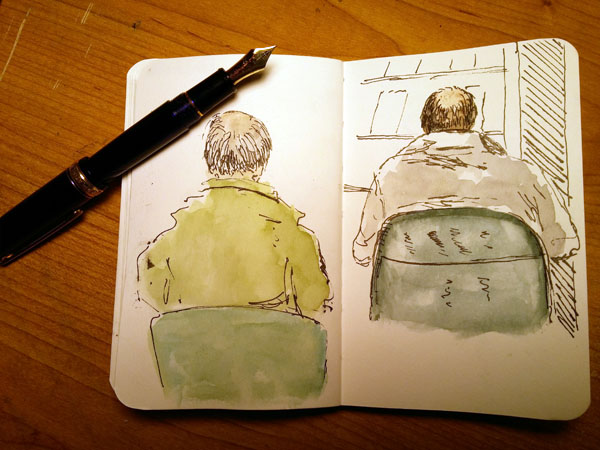I’ve talked about how hard it is for me to transition from street sketcher to indoor sketcher every winter and that saga continues. I’m starting to think, though, that my situation this year is a bit different. I say this because the depth of my ‘doldrums,’ as I’ve called them are far deeper than normal and I believe the reason is that I’m also at a point where I want to shift gears a bit, take it up a notch, move outside my comfort zone, or whatever euphemism fits.
As the summer has worn on I’ve also started thinking about watercolors beyond using them like crayons and I want to learn how how those brush things work. I’ve been so concentrated on learning to draw that I’ve completely ignored color, viewing it as an after-the-fact thing. I also want to extend/expand my visual brain, improving my visual memory, textures vocabulary, ability to see half-tones, etc. This stuff is hard and requires at a shift in my activity. Couple this with the outdoor->indoor shift that’s taking place at this time of year and my poor, very old brain, is just a bit confused, maybe even intimidated. Getting it to act seems hard right now.
I talked a bit with my buddy Yvan and he suggested that I get up in the morning and do “something simple.” He’s also been telling me forever that I should draw from imagination, not by drawing dragons but by drawing things I’ve seen, or at least representative of things I’ve seen. He suggests this will change the way I see the things I draw even when I’m on location. Since he’s rarely been wrong when it comes to things “art,” I think he’s right about this as well.
And so, this morning, I got up, grabbed a piece of photocopy paper (does this mean I haven’t completely bought into the idea?) and I did a quick drawing of a lamppost coming out of a pile of sunflowers that I saw on Ile d’Orleans this summer. I’m sure it’s not completely accurate but I think it’s close to the real thing. Most of all, I felt a process I’ve never felt before, a questioning of how big/small things were, how one thing related to another and I think this is the stuff Yvan was talking about.
I sipped some coffee and thought some about what I’d just done, which in turned caused me to grab another sheet of photocopy paper and I started doing really quick sketches of the lamp using a bunch of different pens. No attempt was made to be accurate as mostly I was thinking about how each pen felt and what kind of line did it make. I include it here just to document this journey, not that it is anything worthy of looking at.
Winter may not be such a bad thing for me at this point. I’m going to try to set up a “studio,” which for me amounts to having some sort of uncluttered surface and I’m going to experiment, draw from memory, and maybe even train my visual memory. I’m starting to get excited by the prospects.
Oh…while I’m writing, here’s a quick sketch I did from Marc Taro Holmes new book on being a concept artist. Marc’s version is much better (grin). I hope to talk about this book soon.


